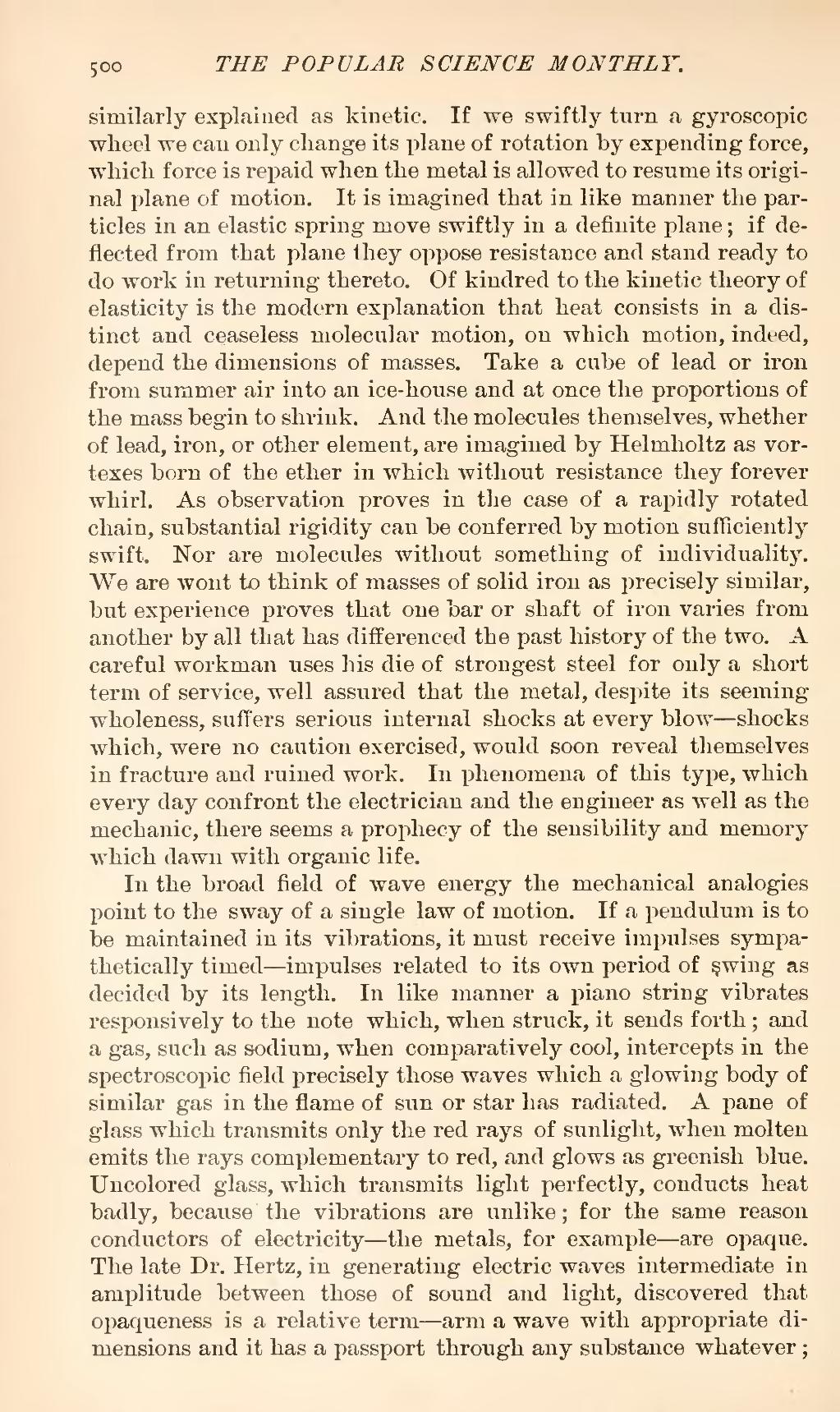similarly explained as kinetic. If we swiftly turn a gyroscopic wheel we can only change its plane of rotation by expending force, which force is repaid when the metal is allowed to resume its original plane of motion. It is imagined that in like manner the particles in an elastic spring move swiftly in a definite plane; if deflected from that plane they oppose resistance and stand ready to do work in returning thereto. Of kindred to the kinetic theory of elasticity is the modern explanation that heat consists in a distinct and ceaseless molecular motion, on which motion, indeed, depend the dimensions of masses. Take a cube of lead or iron from summer air into an ice-house and at once the proportions of the mass begin to shrink. And the molecules themselves, whether of lead, iron, or other element, are imagined by Helmholtz as vortexes born of the ether in which without resistance they forever whirl. As observation proves in the case of a rapidly rotated chain, substantial rigidity can be conferred by motion sufficiently swift. Nor are molecules without something of individuality. We are wont to think of masses of solid iron as precisely similar, but experience proves that one bar or shaft of iron varies from another by all that has differenced the past history of the two. A careful workman uses his die of strongest steel for only a short term of service, well assured that the metal, despite its seeming wholeness, suffers serious internal shocks at every blow—shocks which, were no caution exercised, would soon reveal themselves in fracture and ruined work. In phenomena of this type, which every day confront the electrician and the engineer as well as the mechanic, there seems a prophecy of the sensibility and memory which dawn with organic life.
In the broad field of wave energy the mechanical analogies point to the sway of a single law of motion. If a pendulum is to be maintained in its vibrations, it must receive impulses sympathetically timed—impulses related to its own period of wing as decided by its length. In like manner a piano string vibrates responsively to the note which, when struck, it sends forth; and a gas, such as sodium, when comparatively cool, intercepts in the spectroscopic field precisely those waves which a glowing body of similar gas in the flame of sun or star has radiated. A pane of glass which transmits only the red rays of sunlight, when molten emits the rays complementary to red, and glows as greenish blue. Uncolored glass, which transmits light perfectly, conducts heat badly, because' the vibrations are unlike; for the same reason conductors of electricity—the metals, for example—are opaque. The late Dr. Hertz, in generating electric waves intermediate in amplitude between those of sound and light, discovered that opaqueness is a relative term—arm a wave with appropriate dimensions and it has a passport through any substance whatever;
